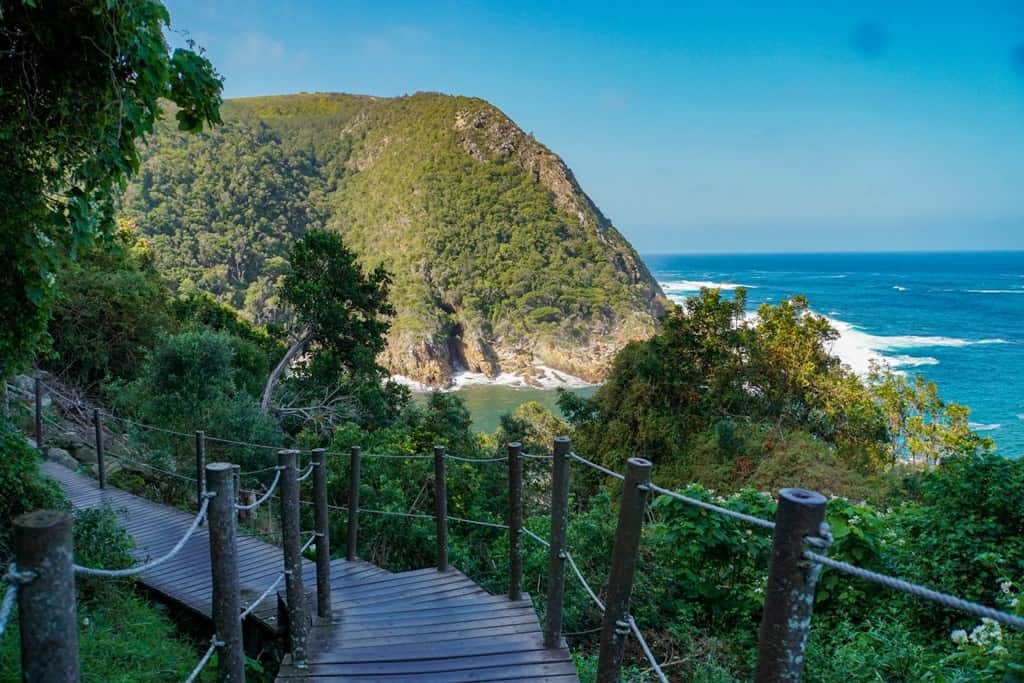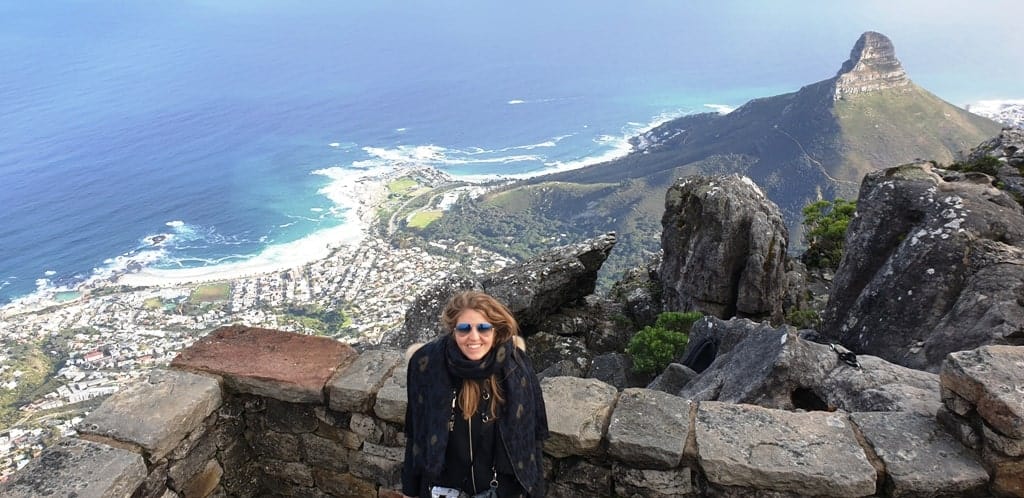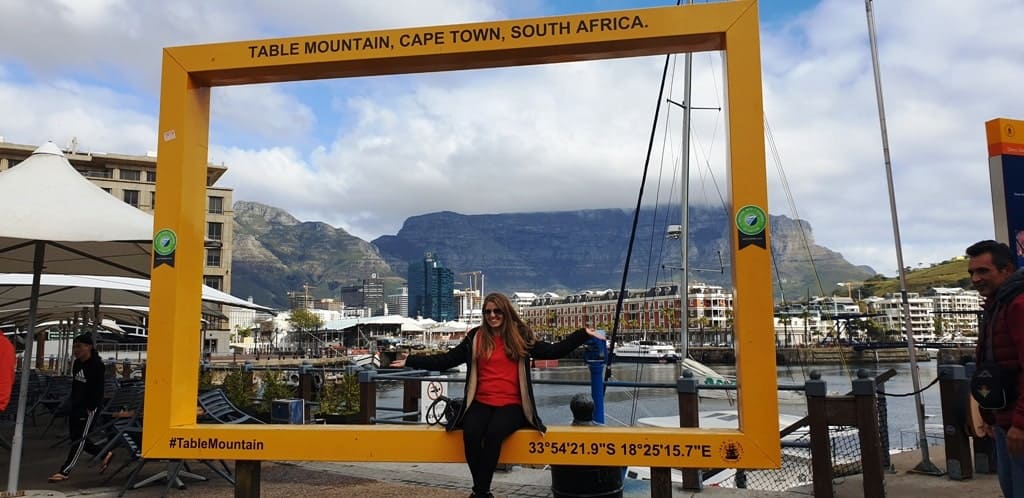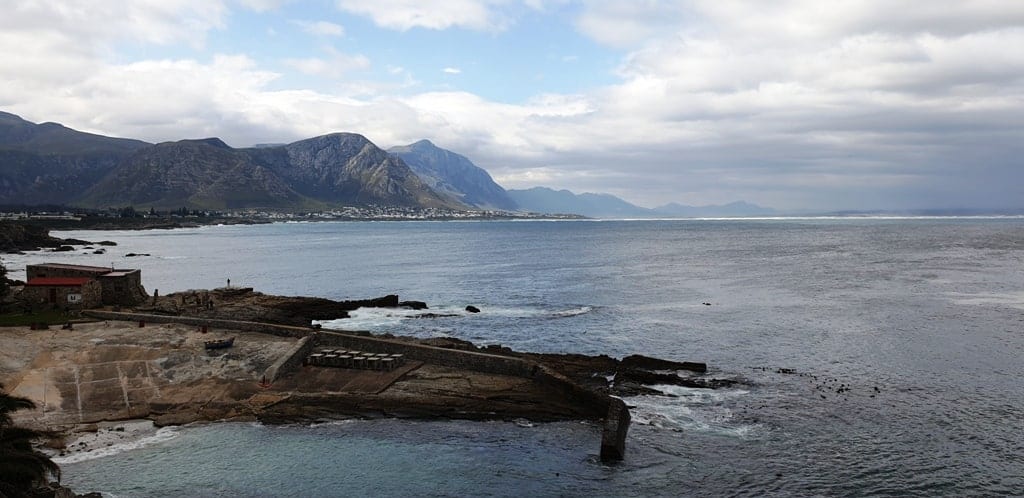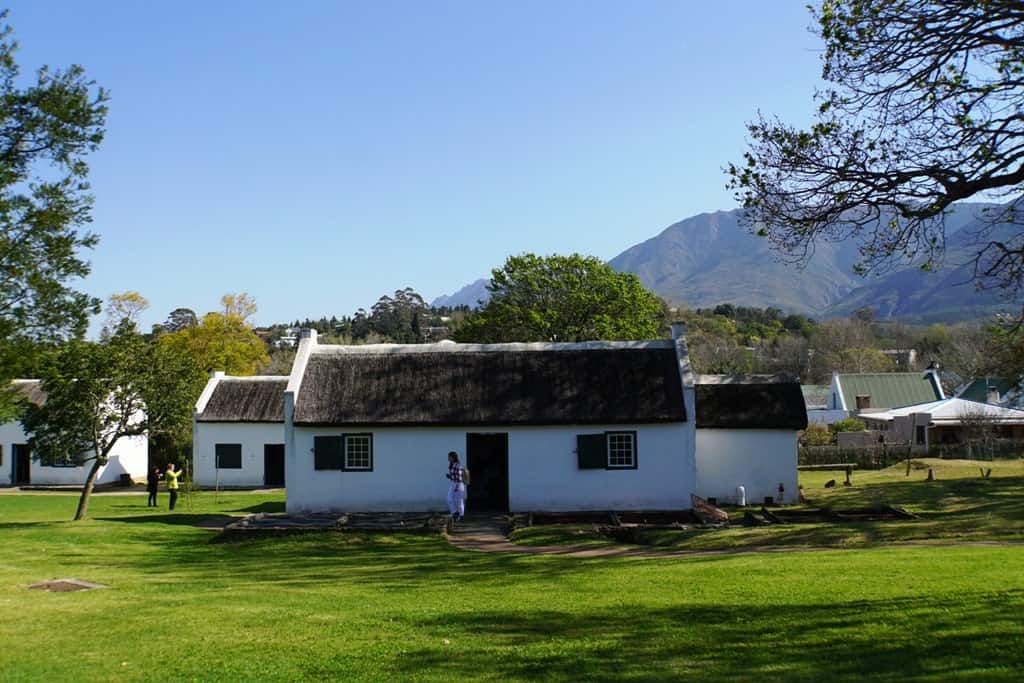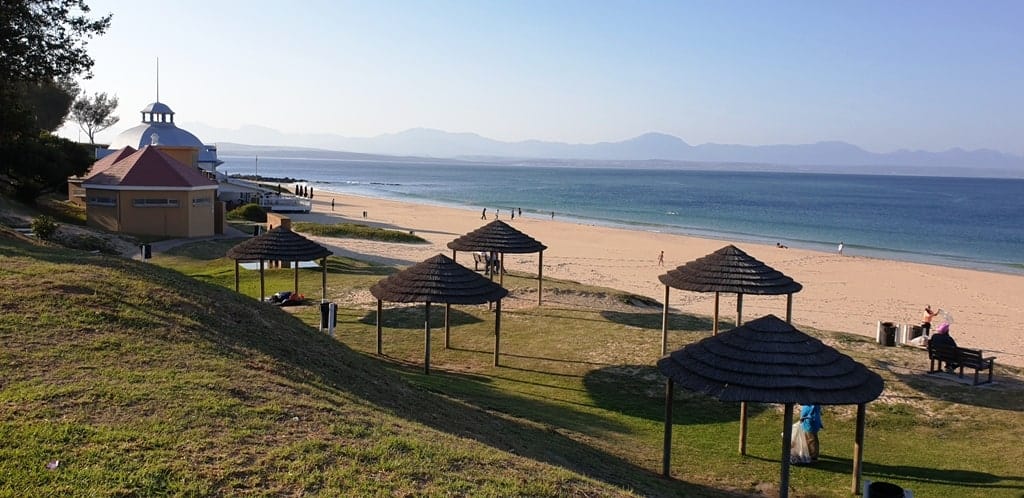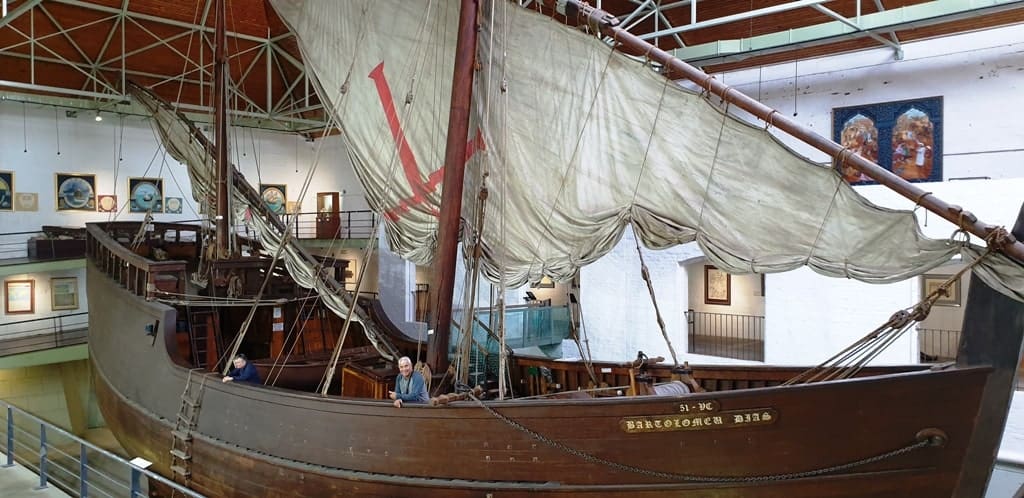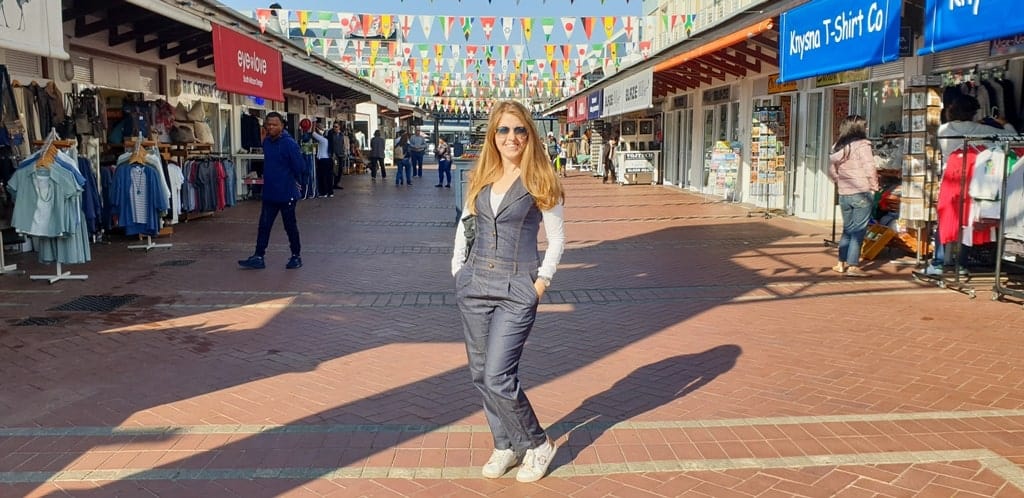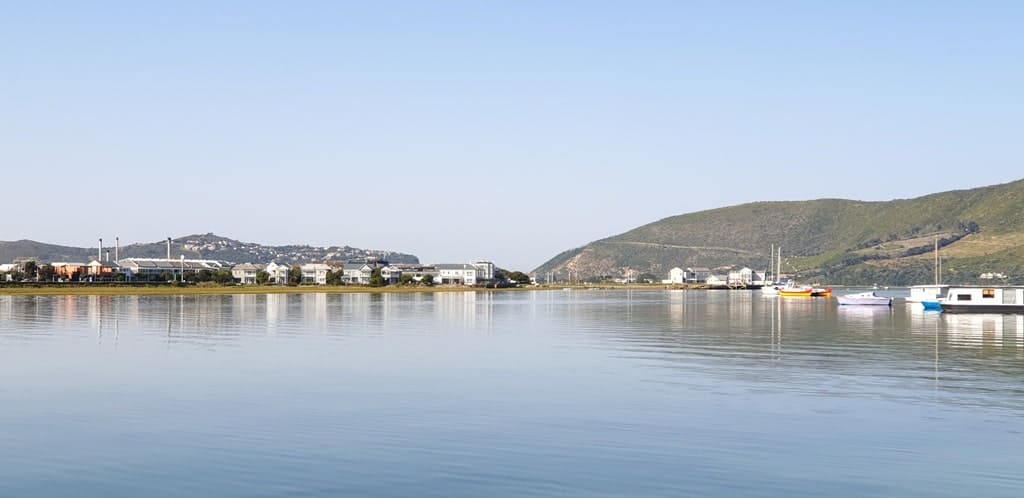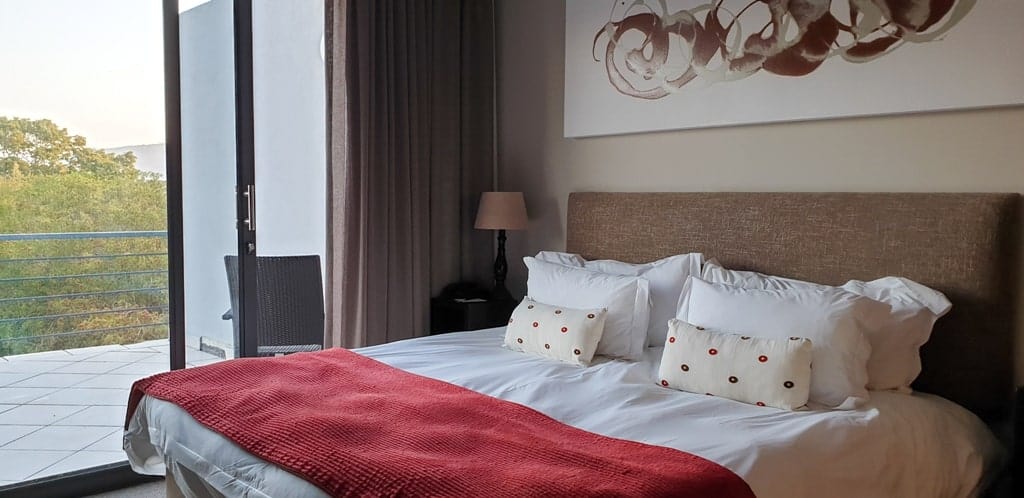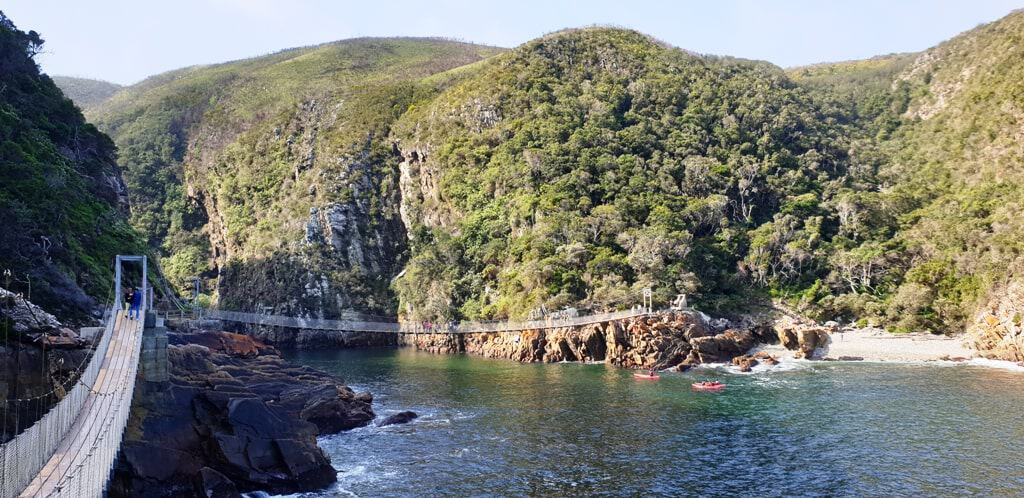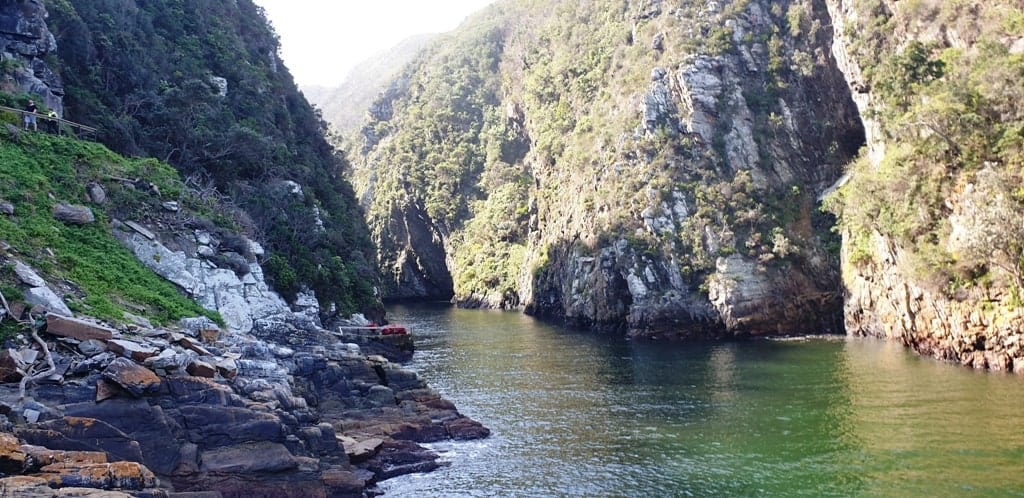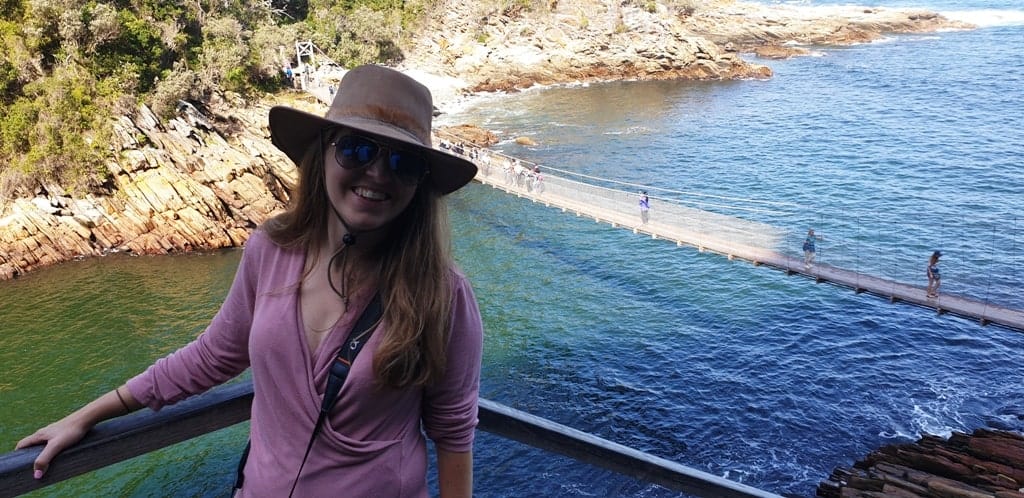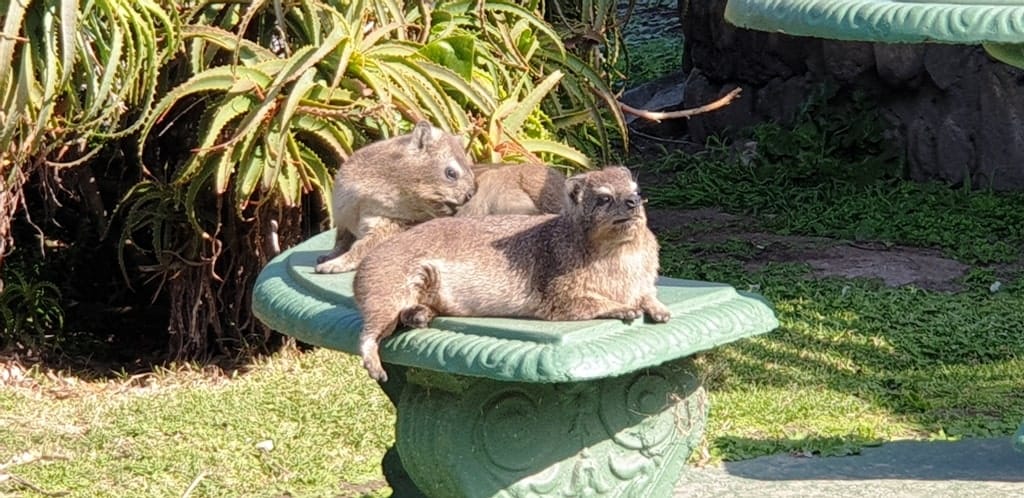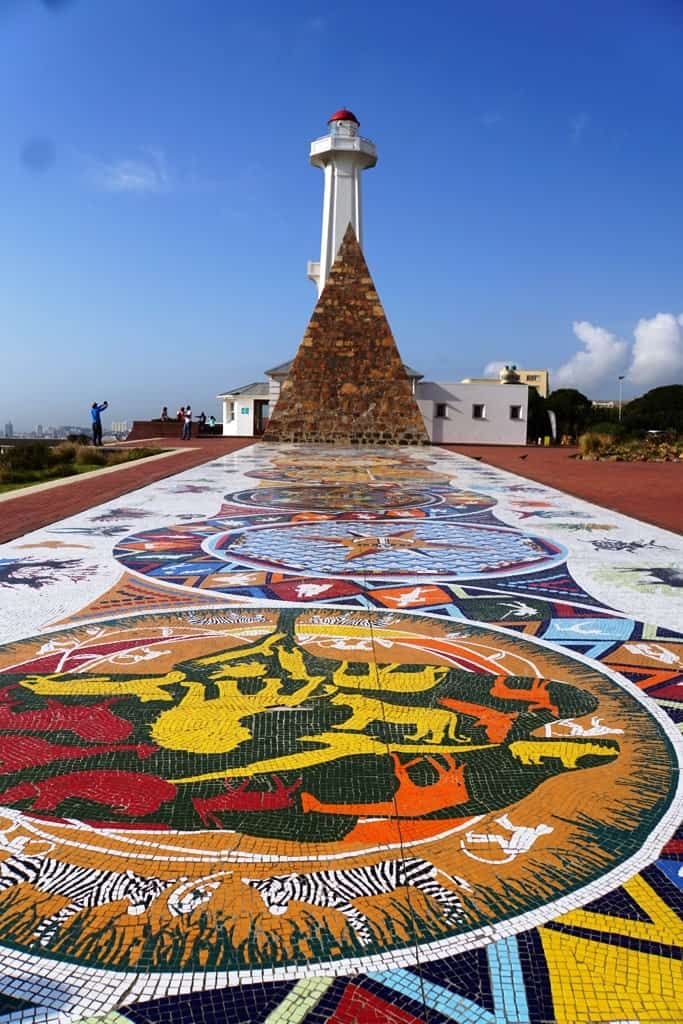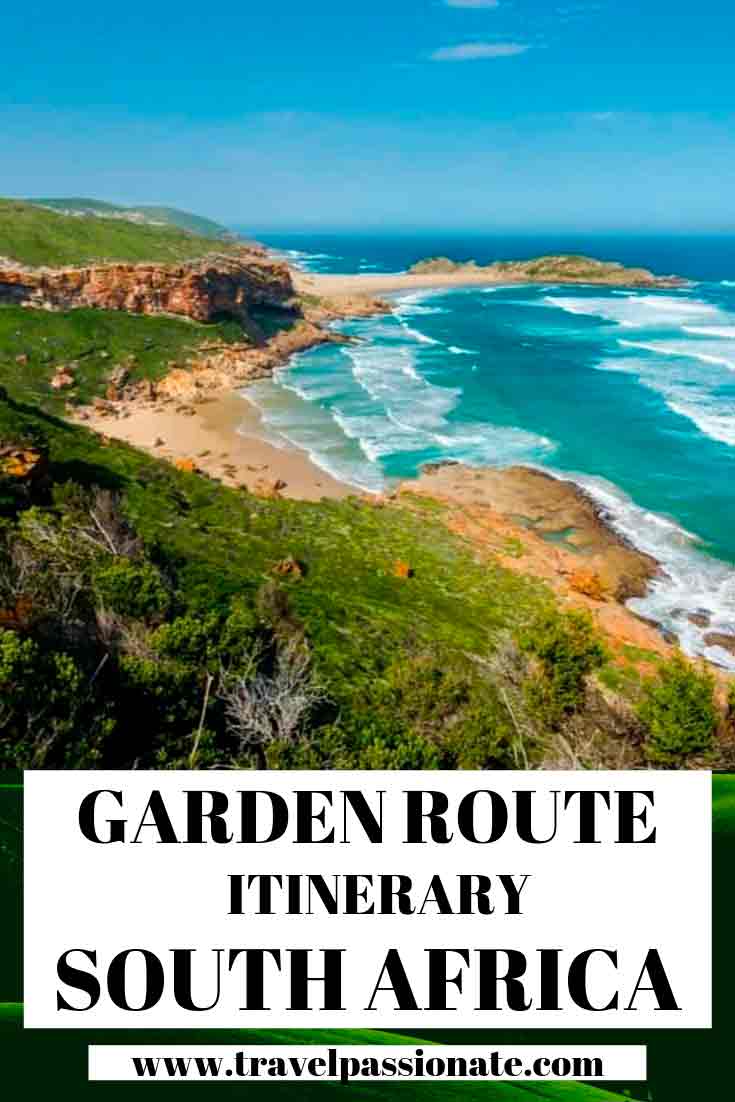This post is also available in: French
Along the southern coast of South Africa, nearly as close to Antarctica as you can get with a car runs a 300km stretch of road known as the Garden Route. Ironically, the Garden Route is actually one of the best coastal drives in the world. While traditionally the Garden Route begins in Mossel Bay and ends in Tsitsikamma National Park, many drive from Cape Town to Port Elizabeth, nearly doubling the length of the journey.
Table of Contents
How to Get to South Africa
The major international gateways into South Africa are Cape Town and Johannesburg, with daily flights from across the globe. Cape Town offers the easiest access to the Garden Route, but if you’re pairing this with a safari, then consider an open-jaw ticket into Cape Town and out of Johannesburg or vice versa.
Be sure to know what type of visa you need. Your home country’s embassy or state department website will have these details.
Disclaimer: This post contains affiliate links. This means that should you click on certain links, and then subsequently purchase a product, I will receive a small commission.
The Best Time to Drive the Garden Route in South Africa
The South African late spring and summer (October to April) is the best time to drive the Garden Route but to avoid the Christmas crowds, go between February and April. Spring (September to October), though, offers fantastic opportunities for whale watching along the coast near Hermanus. All year-round, you can get fresh seafood, oysters, mussels, and more along the Garden Route; in the summer, this farming region produces wonderful local vegetables, fruits, meats, and cheeses.
If you don’t want to rent your own car and drive the Garden Route, you can use this hop-on, hop-off bus service. It travels between Cape Town and Durban (daily between Cape Town and Port Elizabeth, and 4 times a week between Port Elizabeth and Durban), and travellers can spend as much time as they like in a given destination before getting back on a bus and continuing the journey. You have the freedom to design your own itinerary without having your own transportation.
Garden Route itinerary
Cape Town
Although the Garden Route doesn’t technically begin or end in Cape Town, many tours do start or end here. The international airport, vibrant waterfront, and excellent luxury hotel scene make it the perfect place to kick off or finish the Garden Route. Cape Town is famous for the V&A Waterfront, Robben Island (where Nelson Mandela was imprisoned), Table Mountain, and the Kirstenbosch National Park. It’s also a great place to base for wine tours into the nearby Winelands and has delicious seafood, namely oysters.
Where to Stay in Cape Town
I stayed in the Southern Sun Waterfront hotel, which is located in the city centre, a few blocks from the V&A Waterfront. The rooms are comfortable and modern, and the hotel boasts several dining options.
Click here for more information and to book your stay.
For more options on where to stay in Cape Town, check out this guide with the best areas to stay in Cape Town.
Driving distance to Hermanus is 121 kilometres, or 138 km if you go via Betty’s Bay.
Hermanus
Hermanus, known for whale watching in the spring, is also a great place to base for hiking at Fernkloof Nature Reserve or shark diving in Gansbaai. You can also stay here to explore some of the southern coast, like the Cape Agulhas Lighthouse, the third oldest in South Africa and the second oldest still in use today. Cape Agulhas is the most southerly point in Africa, and where the Indian and Atlantic Oceans meet. Since it’s not every day you get to visit a place like that, this is a spectacular detour on the Garden Route.
This two-hour whale watching tour is a great way to experience the Western Cape from a different viewpoint, and witness some of the earth’s largest marine mammals in their natural habitat. You may also see seals, sea lions, seabirds, and dolphins.
For the more adventurous, shark cage diving offers an even bigger thrill. Some of the animals you may see from the safety of the cage include great white sharks, copper sharks, and stingrays.
Where to Stay in Hermanus
The Windsor Hotel and Apartments sit at the edge of majestic Walker Bay, and most of the rooms offer prime whale watching from your windows or terrace. The 120-year old hotel is near plenty of dining and shopping options too.
Click here for more information and to book your stay.
Driving distance to Swellendam is 221 kilometres.
Swellendam
Swellendam, which is located inland halfway between Hermanus and Mossel Bay, is the third oldest town in South Africa and still retains its original Cape Dutch heritage buildings. The farming community is a delightful step back into colonial South Africa and has plenty to offer Garden Route travellers who venture inland for a night. Spend time here wine tasting, mountain biking, or enjoying a spa day.
Driving distance to Mossel Bay is 168 kilometres
Mossel Bay
The official starting point of the Garden Route, and exactly halfway between Cape Town and Port Elizabeth, Mossel Bay is known for its unique post office. Legend says that a Portuguese sailor left a note in an old boot and tied it to a tree; the letter reached its addressee, and to this day people can post letters from the old tree – although now there is a stone boot with a post box. Mossel Bay is also known for being the first place that Europeans landed on South African soil.
Visit the Bartolomeu Dias Museum Complex for a glimpse into the history, culture, ecology, and environment of Mossel Bay. In the nearby mountains, Botlierskop Private Game Reserve offers tours of the reserve. You could spot most of their 26 species while in their open-air vehicles, including hippos, rhinos, elephants, lions, giraffes and more.
You might also like: Things to do in Mossel Bay.
Where to Stay in Mossel Bay
The Protea Hotel by Marriott, located within the Dias Museum Complex, and in one of the oldest buildings in Mossel Bay, is a luxurious and tranquil place to stay.
Click here for more information and to book your stay.
Driving distance to Knysna is 105 kilometres
Wilderness
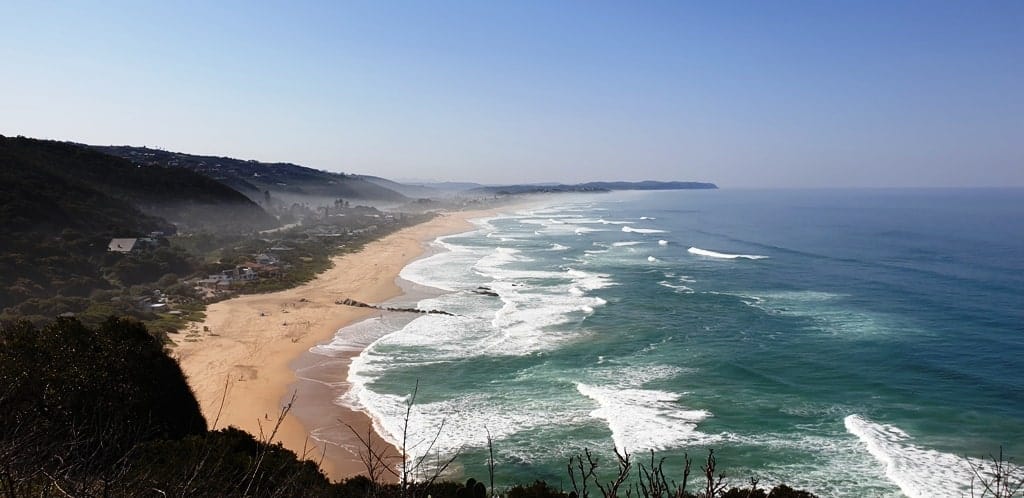
In between Mossel Bay and Knysna is Wilderness, perfect for an afternoon stop. Here, the bend of the river creates a map of Africa in the surrounding forest, while the Kaaimans River Bridge crosses a shallow, rust-coloured estuary.
Knysna
Knysna makes for a lovely respite of a few days along the Garden Route. Sheltered behind the Knysna Heads from the unrelenting Indian Ocean, the town is famous for oysters and other seafood. Some of the best things to do here include a boat tour in the lagoon, where you could spot local birdlife or marine animals, and out to the heads, or a hike up along the heads through the Featherbed Nature Reserve, where you can also explore ancient sea caves.
You can also go whale watching here in Knysna, out past the heads into the sea. Besides humpback and southern right whales, you can spot penguins, seals, and dolphins.
If you fancy a more leisurely cruise, take the sundowner estuary cruise which cruises the lagoon and then leaves to cruise along the coastline whilst you enjoy a sumptuous dinner platter and a glass of bubbles. Base in Knysna to explore the nearby Plettenberg Bay.
You might also like: Things to do in Knysna.
Where to Stay in Knysna
The Moorings, a Premier Resort, is located three kilometres from town, with private access to the lagoon and a private dock for guests. They offer a myriad of activities as well as comfortable accommodation.
Click here for more information and to book your stay.
Driving distance to Plettenberg Bay is 32 kilometres, distance to Port Elizabeth is 261 kilometres
Plettenberg Bay
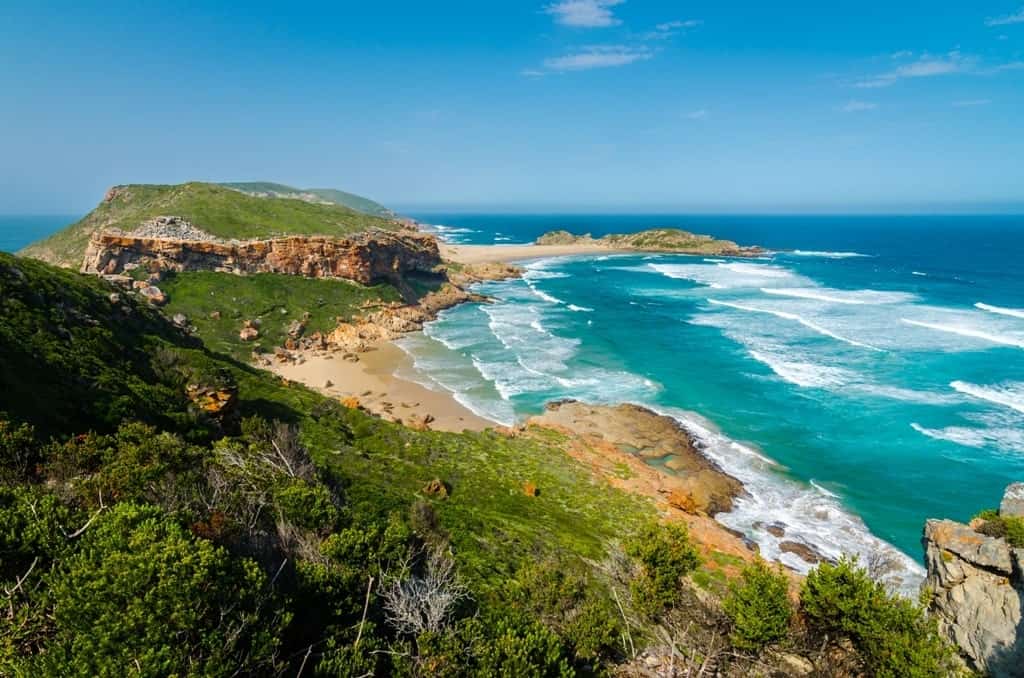
Plettenberg Bay, or Plett Bay as the locals call it, is one of the more touristy towns on the Garden Route. Some of the local attractions include the Monkeyland Primate Sanctuary and the Birds of Eden, the world’s largest free-flight bird sanctuary. Hikers will love the nearby Robberg Nature Reserve, while sea lovers will enjoy sea kayaking or other water-based activities in the area.
For the more adventurous, there’s canyoning, cliff jumping, waterfall zip-lining, and more deep in the indigenous forest on this exciting tour. Spend a few hours abseiling down waterfalls, jumping from 7m high cliffs into pristine swimming pools, and exploring the canyon as it meanders through the valley.
Tsitsikamma National Park
Past Knysna, along the way to Port Elizabeth, is the Tsitsikamma National Park. Home to scenic viewpoints, easy walking trails, and epic scenery, the park is a must-see along the Garden Route. Be sure to stop at Bloukrans Bridge, either to Bungy jump or to watch people jump – at 200 metres, its the tallest arched bridge in Africa, one of the tallest arched bridges in the world, and a popular place to bungy.
Participate in the Storms River kayak tour, in which you kayak down the river, under the Bloukrans Bridge, and into a bat cave upriver, or the National Park Canopy Tour, which offers you the chance to zipline between platforms 30 metres high in the forest. The canopy tour is a unique ecological tour that takes a close look at the flora, fauna, and birdlife in the Outeniqua Yellowwood forest.
If you have time, a must-do is hiking the 43-kilometres Otter Trail. This incredible trail takes 5 days/4 nights and combines the dense Tsitsikamma forest with incredible coastal scenery. It’s also known for its diverse bird and wildlife spotting, as well as breathtaking waterfalls, natural rock pools, and rivers.
The Otter Trail begins about 70 kilometres east of Plettenberg Bay, about 200 kilometres from Port Elizabeth, at the mouth of the Storm River and finishing at the Groot River in Nature’s Valley.
Driving distance to Port Elizabeth from the Otter Trail is 200 kilometres, and from Plettenberg Bay, it’s just under 300 kilometres.
Stormsrivier
Stormsrivier is the traditional starting or ending point of the Garden Route. Tucked in the Tsitsikamma National Park, where the Storms River enters the Indian Ocean, there is excellent headland and gorge hiking here, all with dramatic views of the coastline.
Port Elizabeth

Port Elizabeth marks the end of the nontraditional Garden Route. As its name might suggest, its a major port city on the Indian Ocean, but it is also surrounded by several large game reserves, where you can view elephants, rhinos, leopards, and more.
The most famous of these and one you should make time to visit is Addo Elephant Park. In the city, be sure to walk the Donkin Heritage Trail, which takes visitors through the history of PE by historical monuments in the city centre. There is also the Nelson Mandela Metropolitan Art Museum, and Route 67, a walking route of 67 artworks commemorating the 67 years Mandela dedicated to the freedom of his country.
Where to Stay in Port Elizabeth
The hip Radisson Blu is located south of the city along the coastal road, across from Hobie Beach and near the nature reserve.
Click here for more information and to book your stay.
Protea Hotel by Marriott is 6.5 km from the city centre, a contemporary hotel with a rooftop plunge pool and ocean views.
Click here for more information and to book your stay.
Tips For Driving the Garden Route
First and foremost, take your time! While this can be done in 3 days, it’s more refreshing to spend time exploring some of the more off the beaten path places. If you’re a hiker, you’ll want to ensure you have the time to hike at various points along the route, and if you’re a photographer, you’ll want to take time for sunrise or sunset photoshoots!
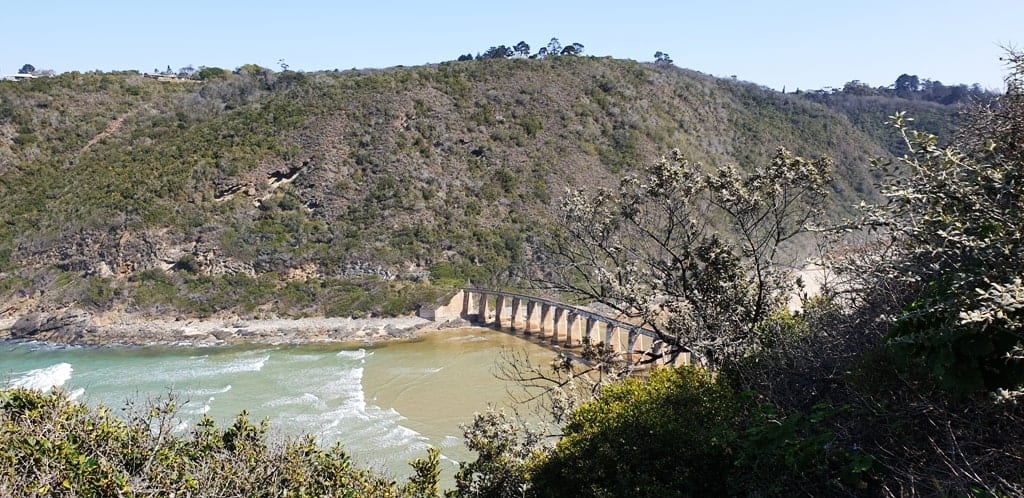
In the busy season, booking your accommodation in advance is key. There’s nothing worse than arriving in town after a long day on the road, only to find that you can’t get a bed anywhere. Some accommodations may not be online, and may only take cash, so be sure to find out in advance what they require.
South Africans drive on the left-hand side of the road, so for any Americans or Europeans visiting, it’s a good idea to spend a few days in Cape Town acclimating to the time zones before getting behind the wheel of a car. If you’d rather take a guided tour, do your research to make sure you’re travelling with a reputable company, or reach out to a trusted travel advisor to help. And, of course, travel insurance is a must-have!

